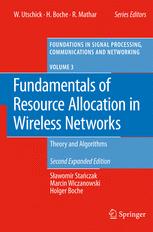

Most ebook files are in PDF format, so you can easily read them using various software such as Foxit Reader or directly on the Google Chrome browser.
Some ebook files are released by publishers in other formats such as .awz, .mobi, .epub, .fb2, etc. You may need to install specific software to read these formats on mobile/PC, such as Calibre.
Please read the tutorial at this link: https://ebookbell.com/faq
We offer FREE conversion to the popular formats you request; however, this may take some time. Therefore, right after payment, please email us, and we will try to provide the service as quickly as possible.
For some exceptional file formats or broken links (if any), please refrain from opening any disputes. Instead, email us first, and we will try to assist within a maximum of 6 hours.
EbookBell Team

4.3
68 reviewsThe wireless industry is in the midst of a fundamental shift from providing voice-only services to offering customers an array of multimedia services, including a wide variety of audio, video and data communications capabilities. Future wireless networks will be integrated into every aspect of daily life, and therefore could affect our life in a magnitude similar to that of the Internet and cellular phones.
This monograph demonstrates that these emerging applications and directions require fundamental understanding on how to design and control wireless networks that lies far beyond what the currently existing theory can provide. It is shown that mathematics is the key technology to cope with central technical problems in the design of wireless networks since the complexity of the problem simply precludes the use of engineering common sense alone to identify good solutions.
The main objective of this book is to provide tools for better understanding the fundamental tradeoffs and interdependencies in wireless networks, with the goal of designing resource allocation strategies that exploit these interdependencies to achieve significant performance gains. The book consists of three largely independent parts: theory, applications and appendices. The latter contain foundational aspects to make the book more understandable to readers who are not familiar with some basic concepts and results from linear algebra and convex analysis.